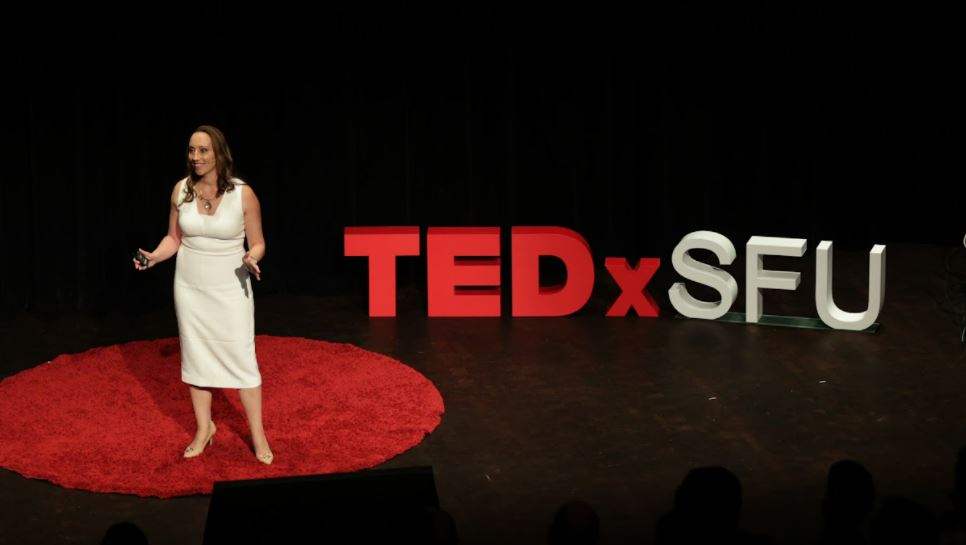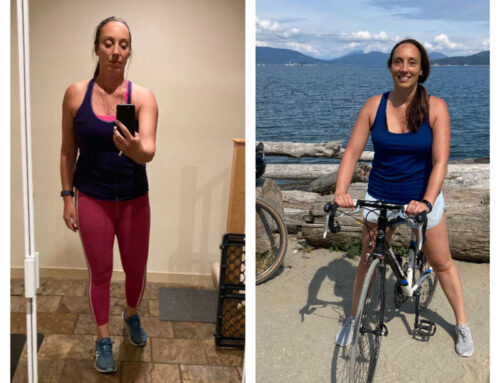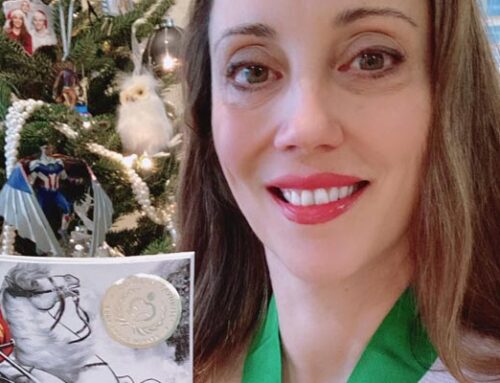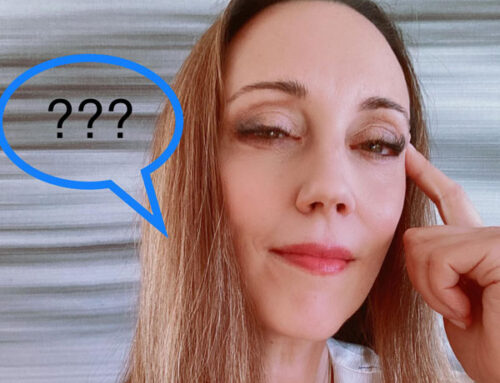Transcript of TEDx SFU 20 November 2021
My sincere thanks to you all for your support and interest in my recent TEDx SFU talk. It will be a few months before the official link is available for viewing. In the meantime, if you are interested in the contents, here is my transcript from what I describe as the most electrifying experience of my life!
Three Questions to Change Your Life
Do you hear voices in your head?
The one that tells you to check that lock again, and again, even though you know you’ve attended to it?
Or does your voice tell you if you don’t do something perfectly, it will all be for naught- so why even bother?
Do you feel like your negative emotions reflect the way things are? I think… therefore, it must be true?
You have the power to change this.
In the past 20 months, each and every one of you has experienced some level of fear, loss, anxiety and disconnection – and in response – each of you has had to adapt and adopt new ways of working, living and being.
This is a testament to your resilience. You’ve demonstrated that to succeed in uncertainty, you don’t need to necessarily eliminate it.
What if I told you, you could examine the patterns brought forth by uncertainty, and bloom them into possibilities?
Today, I’m here to share with you from my world of change management, and human systems dynamics, how three simple questions can propel radical change in the places where you are stuck in your own life. Three questions that can transform uncertainty into possibility.
Hi, my name is Lisa Bournelis. I’m a change management and transformation specialist in one of Canada’s largest health authorities. My job is to compassionately lead people through complexity (for example, a global pandemic!) Before that, I was a humanitarian aid worker with the United Nations and other aid agencies, serving in former war zones in the Balkans, Afghanistan and Africa.
I’m also a mom to a child diagnosed with obsessive compulsive disorder. So chaos, complexity and change are constant companions in my line of work and in my home.
And yet, I must confess, I sometimes hate change!
If you feel the same way, we are in good company.
Because let’s face it: Change is hard.
The science tells us this[1].
Research on the neuroscience of change speaks to the ‘fight or flight’ response evoked when certainty is removed. As blood is reduced from the pre-frontal cortex where most of our considered thought processing occurs, our ability to think clearly is reduced and memory is impaired. This is often accompanied by anxiety related to perceived threats associated with loss or deprivation.
Now add to this the Covid pandemic, and we share a global experience of collective upheaval.
So let me say it again, change is hard.
The research (in my line of work) tells us this. According to McKinsey and Company, over 7/10 change initiatives launched by organizations fail,[2] often because leaders don’t consider the impact of the change on those who need to do their job differently for that change to succeed. Think about that time at work when you were asked to do things differently – like try new software, adopt a new professional practice, or use a new piece of equipment. You may have experienced some inevitable discomfort and frustration in the process, and you may have noticed that not everyone became proficient at the same time.
But the good news is that successful change is incremental and complexity is the genesis of possibility.
Motivational speakers proclaim that, “If you can dream it, you are half way there.” I’m here to share with you how to get through that second half.
Now back to those questions. Perhaps, you are thinking, “I know these! Why am I here, what is the meaning of life, what is for dinner?” My dear audience, these are not the questions I will attempt to address, as I am no philosopher. These questions are far simpler and more pragmatic, and when combined, can be completely transformational.
What?
So What?
Now What?
This unique change practitioner tool comes from the Human Systems Dynamics Institute and was pioneered by sisters Glenda Eoyang and Royce Holladay in their work on the application of complexity science to human organizational systems.[3] Or more simply put, it’s known as the Adaptive Action Cycle.
What? So What? Now What?
As a practitioner, what I like about this tool, is that it recognizes that change is a process and not a singular one-time event. In 2019, Harvard researches exploring the reasons why we find it so hard to change unhealthy behaviour, found that successful change only comes in stages. How long it takes, is an individual matter[4]. (How many tries did it take until you to quit smoking?!!) The adaptive action cycle is just that – a simple, powerful and ongoing planning process that can help you move through complexity and uncertainty.
Essentially, you try something (anything), observe the changes in patterns or impact this particular action brings, and then adapt or try something new until you have found the right fit for purpose.
Imagine a kaleidoscope. With every shift, you get infinite patterns and possibilities.
By understanding the dynamics that shape those patterns, you can then take what they call, ‘one wise action’ towards your goal.
Now let’s acknowledge that the world of ‘self improvement’ is an endless procession of ‘I’m not enough’. That is not what the adaptive action cycle is about. It’s about thriving in uncertainty by transforming it into possibility when you are feeling stuck.
What? So What? Now What?
So how does this practically work to move you forward when you feel so overwhelmed, you don’t know where to start?
Let me give you an example at a micro level that’s simple enough from a child’s perspective. As I shared earlier, I am a mom to a perfect little boy diagnosed with obsessive compulsive disorder (or OCD). For those unfamiliar with OCD, according to the World Health Organization, it is neuropsychiatric disorder with over 5.1 million diagnosed cases globally. (That’s roughly the population of Toronto, Montreal and Vancouver, combined.)
In short, it’s a little understood condition and not the cutesy experience of being a perfectionist, or liking things just so. And no, it’s not just about excessive hand washing or contamination fears like you see in films. It can cover any fear and be quite debilitating. Image the thing you are most afraid of in the entire world occurring, if you don’t submit to that compulsion? Shifting mindsets is a constant occupation for my little one.
Knowing that our thoughts affect our feelings, which in turn affect our behaviours, he has used the three questions to disempower the voice.
Don’t get me wrong, he has also had tremendous support from therapists specialized in exposure and response therapy, but the adaptive action cycle is a nice simple way to reframe the challenge of dealing with the annoying ‘voice’ in the moment.
We acknowledge the ‘What’ – This is what is KNOWN. We note that the thought is present. That it’s the OCD voice and the OCD voice lies to you. That the OCD voice is not you. (We even gave it a distinct nickname – “The Dictator”- to separate the OCD voice, so that my child knows he is not his thoughts.
We reflect on the ‘So What’ – This is what is POSSIBLE. He acknowledges the thought exists and that he has choices around what to do with them in this present moment.
He chooses the ‘Now What’ – This is where he takes his one WISE ACTION. He can view the thought as a bubble and ‘pop’ it with his mental sword. Or, he can imagine he is riding a dragon and breathing fire on those thoughts. He can delay the compulsion, he can ignore it, or he can defy it. Based on how he’s feeling after applying one of his strategies, he can decide what is best to use or try the next time. He can build on his next adaptive action based on the learning he’s gathered from that experience in the moment.
Through therapy, my son has learned (however uncomfortable it is in the moment) that he has power, to disempower the voice.
In our modern world, the pace of change is ever emerging, complex and relentless. Shifting one pattern at a time, can transform uncertainty into possibility.
Do you feel overwhelmed when attending to a complex task? Try this out to leverage that uncertainty.
Start with What: What patterns in your life are making you stuck? What goals are you trying to achieve? What picture are you seeing, and what is most important in those observations? Every choice shifts a pattern in your life!
Then move to So What: What do your observations of those patterns mean to you and are there things you’d like changed based on new opportunities? What do you want to be same and different in the future? Where do you see possibilities in making changes? You may not be able to attend to every issue or every goal at once (nor can you eat an elephant in one sitting) but ask yourself what is one thing I can try? What is one thing I can do right now?
Finally, transition to Now What: Here is where you literally identify that one thing you’ll try. Have a plan, but hold it lightly. Try your one adaptive action. Start with what is easy and possible. Observe the patterns that shift. What outcomes did you expect? What shifted? What stayed the same? What surprised you? What will you try now? What will you try again? What will you try differently?
Learn from whatever you perceive as ‘failure’, as it is really the foundation that springs you into your next adapative action cycle.
It sure beats the ubiquitous New Year’s Resolution doesn’t it?
In my blog, makeoneshift.com, I write about how we, as individuals are complex adaptive systems in our own right. Complex systems are composed of many components with interdependencies that interact with each other. Examples include climate change, armed conflict, healthcare systems, social and economic organizations, living organisms, cells and ultimately our universe!
Because complex systems they don’t function in predictable and linear ways, I argue that we, as individuals, are a microcosm of these larger complex adaptive systems.
Well the adaptive action cycle is a tool that goes beyond personal and organizational application. It is also relevant when working to address the complex, macro, global-level challenges we are all-to-familiar with: things like climate change, poverty, conflict, and so forth.
Given their many interdependent factors, these global challenges seem impossible to solve[i][5]. Yet, they share a number of characteristics in that they are not immediately solvable, and have an infinite number of potential solutions. There is no right or wrong way to address them.
Due to the complex nature of these global challenges, the adaptive action cycle and its three questions is one way we tackling such overwhelming challenge, without having to deal with every component in one go. It allows us to move forward in addressing these problems by leveraging the learning from each past cycle to inform our next actions.
Whether you work in war zones, manage healthcare systems, are making career choices, or navigating difficult relationships, when your situation feels so overwhelming, reframing your sticky challenges can help. What, so what and now what?
Three mighty questions that allow anyone to explore their complex or wicked issue without getting lost in the noise or becoming overwhelmed. You try something (just one thing) to address it. You observe what happens. Based on what you’ve learned, you then try something (that is fit for purpose) again.
So in this spirit, try applying the adaptive action cycle on life, and see where it takes you.
For me, it started with a hastily scrawled post-it note at the height of the pandemic when every day felt like an endless and freakish repetition of the last. On it, it read: What is one thing you will do today to change your experience of feeling stuck?
The post-it is still stuck to my bedside table, but this journey has been extraordinary!
It’s led me to launch a blog and a podcast that speak to using change management tools to deal with uncertainty in your personal life. It’s led me to publish my first a children’s book, “Louie and the Dictator” inspired by my son’s experiences with OCD during the pandemic in an effort to help anxious children realize that small shifts in mindsets can transform their circumstances. It also brought me to this very stage, where I am honoured to share my experiences with you.
I want YOU to walk away knowing that YOU have the power to make whatever necessary shifts are required to elevate your own personal experiences regardless of the complexity of your circumstances.
What? So What? Now What?
What is one shift YOU will make today?
References:
[1] Hilary Scarlett, The impact of organisational change on the brain
[2] https://www.forbes.com/sites/brentgleeson/2017/07/25/1-reason-why-most-change-management-efforts-fail/?sh=3b6968d0546b
[3] “Adaptive Action – Leveraging Uncertainty in Your Organization”.)
[4] [4]2019 Harvard Health Newsletter, “Why It’s Hard to Change Unhealthy Behaviour, and Why You Should Keep Trying”
[5] https://www.interaction-design.org/literature/topics/wicked-problems#:~:text=The%20term%20%E2%80%9Cwicked%20problem%E2%80%9D%20was,formula%20for%20a%20wicked%20problem





